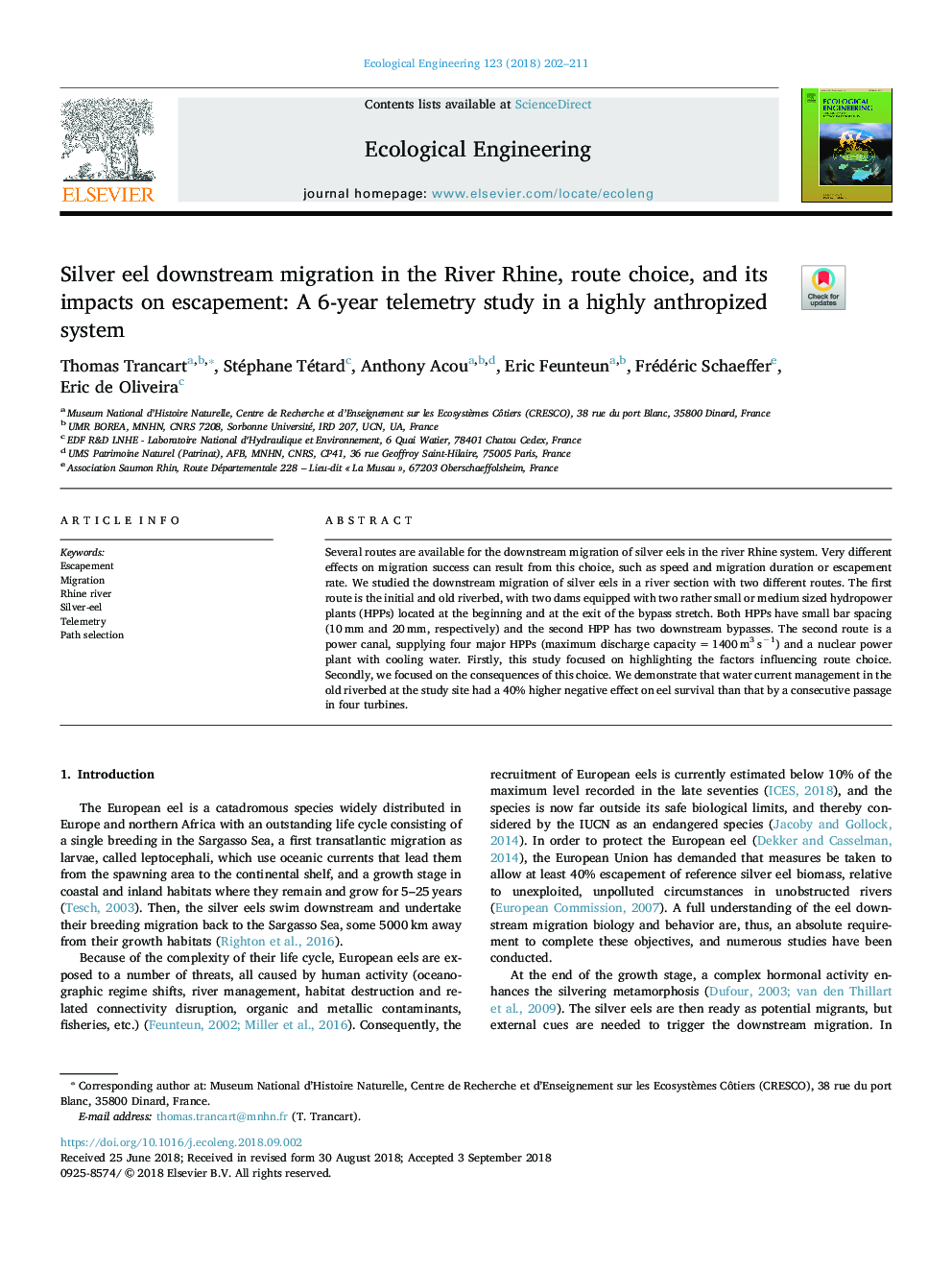| Article ID | Journal | Published Year | Pages | File Type |
|---|---|---|---|---|
| 10144378 | Ecological Engineering | 2018 | 10 Pages |
Abstract
Several routes are available for the downstream migration of silver eels in the river Rhine system. Very different effects on migration success can result from this choice, such as speed and migration duration or escapement rate. We studied the downstream migration of silver eels in a river section with two different routes. The first route is the initial and old riverbed, with two dams equipped with two rather small or medium sized hydropower plants (HPPs) located at the beginning and at the exit of the bypass stretch. Both HPPs have small bar spacing (10â¯mm and 20â¯mm, respectively) and the second HPP has two downstream bypasses. The second route is a power canal, supplying four major HPPs (maximum discharge capacityâ¯=â¯1400â¯m3â¯sâ1) and a nuclear power plant with cooling water. Firstly, this study focused on highlighting the factors influencing route choice. Secondly, we focused on the consequences of this choice. We demonstrate that water current management in the old riverbed at the study site had a 40% higher negative effect on eel survival than that by a consecutive passage in four turbines.
Related Topics
Life Sciences
Agricultural and Biological Sciences
Ecology, Evolution, Behavior and Systematics
Authors
Thomas Trancart, Stéphane Tétard, Anthony Acou, Eric Feunteun, Frédéric Schaeffer, Eric de Oliveira,
